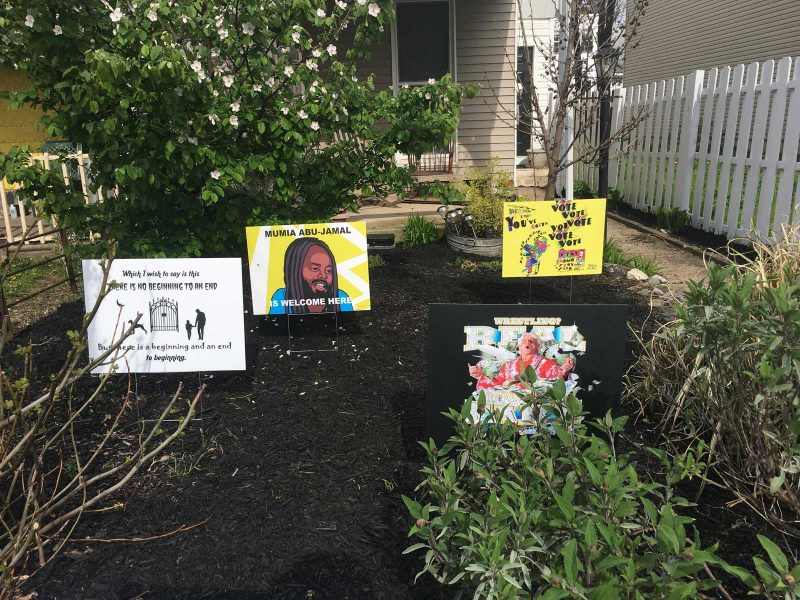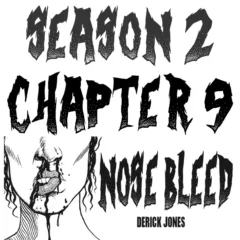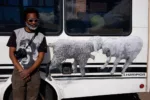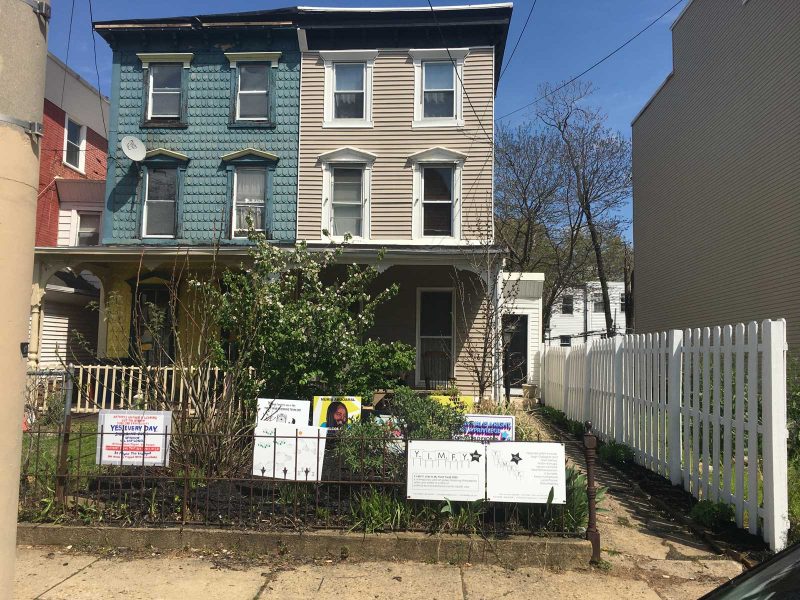
[Ed. Note: This essay and the conversations that sparked it took place prior to the events surrounding the death of George Floyd. Read part one of two: “‘Yes In My Front Yard,’ West Philadelphia’s stimulus check-funded public installation“]
In the midst of the major lifestyle changes brought on by coronavirus, how do we as artists and creatives cope with and adapt to the new restrictions on our lives?
It’s clear that a major reconfiguration of audience engagement and funding structures is necessary for the Philadelphia art community to function in a world that may be shifting in and out of social distancing measures for the foreseeable future. Consequently, DIY projects such as YIMFY 2020 are finding creative ways to engage an audience that is not contained by a building or institution.
Through the quarantine sensation that is Zoom, I was able to interview Daniel Tucker, Emily Bunker, Li Sumpter, and Lucia Thomé on their experiences orchestrating YIMFY 2020 and their perspectives on art and politics in the age of social distancing.
Community and the arts in lockdown
Two months into lockdown, naturally, people are becoming restless. Many, myself included, have lost their main source of income due to the virus. For the masses at home, quarantine can be an isolating, psychologically challenging experience. For the first responders and essential workers who are still going out, daily life is chaotic, physically and mentally draining; multitudes of people are being asked to put themselves at risk without proportionate (if any) protection and compensation every day. Acknowledging America’s pervasive racism, xenophobia, and structural inequality issues that have been exacerbated by the virus, in addition to a bitterly contested election and police brutality in the face of protests, of course it all seems overwhelming and out of control.
The collective psychological impact of coronavirus is obviously enormous, but unlikely to be understood in its full extent for a long while. First responders, essential workers, and vulnerable community members need to be supported right now in very urgent and tangible ways. However, offering emotional support to frontline workers and people who are quarantined alone or feeling isolated is a little less straightforward. The question is, how to cope? “The loneliness is real and I think art could be a remedy to that,” Li says. “They don’t talk about the folx that have already been lost to suicide as a result of this, and that has nothing to do with covid as as biological thing; it’s a psychological impact.”
Daniel is curious what art people feel they need right now and how their preferences will be shaped by what is possible to engage in while social distancing, and Li sees the need to return to ”things that we were maybe too busy or distracted to focus on before: the idea of art as medicine, as a wellness practice to keep people sane, to bring people joy”. Lucia concurs that artists have a dual function as both record keepers and disseminators of hope and positivity.
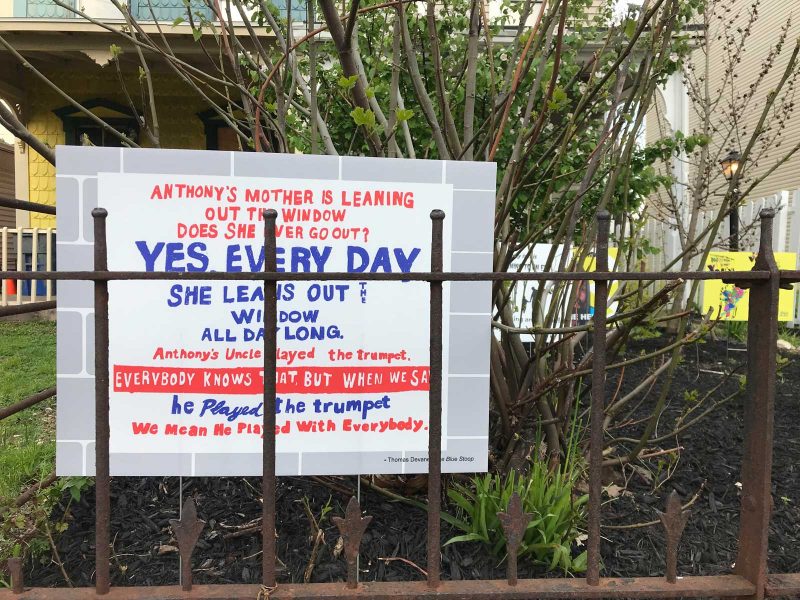
A Speculative Future of Arts Funding
With unemployment at a record high, individuals are scrambling for funding; simultaneously, the arts as an industry is facing a major existential and funding threat. With the proposed complete budget cuts to the Office of Arts, Culture and the Creative Economy and Philadelphia Cultural Fund, Philly’s robust arts scene, already in crisis, is being set up for a situation that will be even more difficult to recover from.
As we are finding that existing philanthropy structures aren’t practical in our new reality, we will be forced to consider alternative models. Though arts funding as we know it tends to be very regimented and favor larger projects, Lucia says a no strings attached funding model is an interesting and useful way to go about paying artists right now. Small scale microgrant funding towards DIY projects encourages more creative risks and idea incubation of a different kind. She thinks Philly makers would benefit from more funding sources adopting this flexible way of working: “we trust you to make something cool, so we’re going to give you some money, just do it and check back in later.”
Acknowledging that “funding structures often over-determine our imagination of what’s possible,” Daniel agrees that now is a good time to experiment outside of that standard.
Moving forward
In spite of the mounting chaos in the arts, there is a kind of opportunity; the pandemic is forcing us to address the shortcomings of conventional arts infrastructure and consider alternative ways to show art and engage people in compliance with social distancing.
Daniel sees the current situation as a push to reconsider the visual and performing art world’s overdependence on event production as the culmination of a project.
Lucia believes that the project-based public engagement paradigm itself needs a major overhaul, from the definition of what constitutes audience engagement to the question of “what’s left?” when you remove the public from the equation.
Thoughtful and creative restructuring of our public spaces to better accommodate a socially distanced lifestyle is also a necessity moving forward. In general, cities are not built in a manner that allows for physical distance; Philly, with its notoriously narrow sidewalks, is no exception. As a Landscape Architecture graduate student, Emily has been spending her time in quarantine on the very timely task of scrutinizing public spaces, “envisioning, how can these spaces serve people a little bit better when they need them and also be walkable?”
A Moment of Appreciation
In this daunting, tumultuous moment, being compassionate (and safe) is exceptionally important. Social distancing has utterly disturbed our ingrained social patterns. As a result, people are putting much more care into their interactions with their neighbors, and support networks have stepped up immensely to offset the dismal government response. While so many are struggling, we need to be thoughtful with how we target resources and consider where they can have the greatest impact. Flexible thinking, the skill so valued by creatives, is what can help us mitigate this mess of a situation.
YIMFY 2020 can be viewed at Emily and Daniel’s front lawn through July 5th, and an additional round of work will be added in June. Check it out at 433 N 41st St, Philadelphia, PA, 19104!
Read part one of two: “‘Yes In My Front Yard,’ West Philadelphia’s stimulus check-funded public installation“
